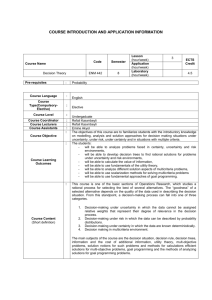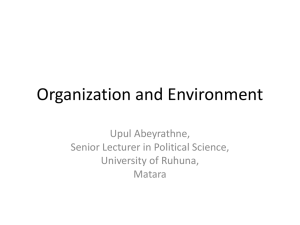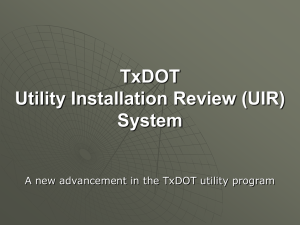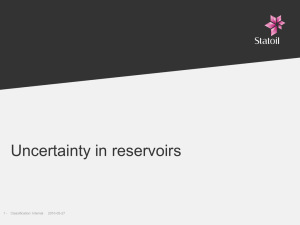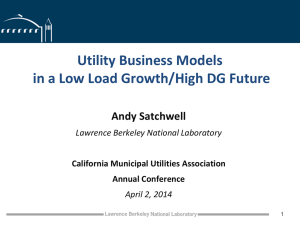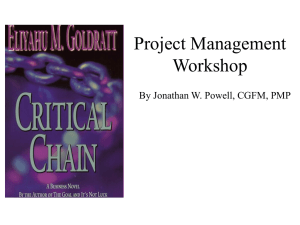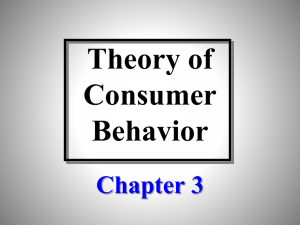ppt
advertisement
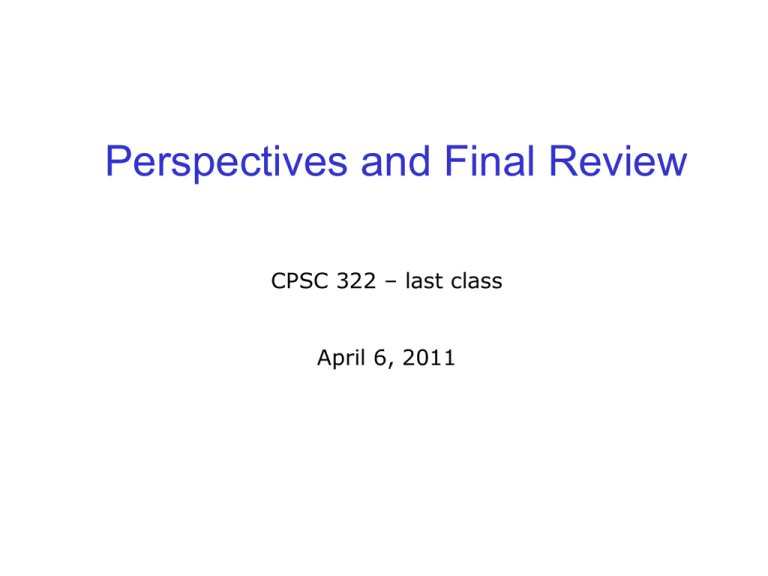
Perspectives and Final Review CPSC 322 – last class April 6, 2011 Announcements • TA evaluations and feedback forms – Please fill them out – Feedback is very important to improve the course • We are gathering feedback for the practice exercises – You should get (/have gotten) an email about a survey – You can earn 10 bonus marks for Assignment 4 by filling in survey • Final exam is Monday, April 11. DMP 310, 3:30-6pm. Be on time! – The list of short questions is online … please use it! – Also use the practice exercises (online on course website) • Remaining office hours this week – Thursday: Frank (11-12, X530), Vasanth (3-5pm, learning center) – Friday: Mike (10-12am, learning center), Frank (3-5, DMP 110) • Optional Rainbow Robot tournament: this Friday, 3-4pm – Vasanth will run the tournament in DMP110, and I will answer questions on the side (office hours) 2 Course Overview Course Module Environment Problem Type Static Deterministic Stochastic Representation Reasoning Technique Arc Consistency Constraint Satisfaction Variables + Search Constraints Logic Sequential Planning Bayesian Networks Logics Search Variable Elimination Uncertainty Decision Networks STRIPS Search As CSP (using arc consistency) Variable Elimination Decision Theory Markov Processes Value Iteration 3 Big Picture: Heuristic Search Uninformed Search without costs: BFS/DFS/IDS Hierarchical decompositions State-of-the-art shortest path algorithms Route Planning (e.g. mobile devices) Uninformed Search with costs: Dijkstra/LCFS Heuristic Search: A*, Branch and Bound CSP & SAT solving Game Trees Monte Carlo Tree Search Inadmissible heuristics Planning Game AI (chess, Go) Game Theory 4 Game Tree Search • Directed graph – Two types of nodes: 1) I choose. 2) opponent chooses I can make decision to maximize my utility Opponent picks to maximize their utility. I.e., minimize my utility – Minimax tree search • Best strategy: make decision such that utility is maximized across all opponent moves • Look forward to depth d, estimate utility of reached state – Human grandmasters in chess: up to 9 levels – Chess computers: up to 13 levels 5 Big Picture: Constraint Satisfaction Problems Constraint Satisfaction Enforcing Consistency Constraint Optimization Backtracking search (Branch and Bound) Local Search Operations Research Propositional Satisfiability Hardware Verification Logistics Scheduling Resource Allocation TSP Software Verification Product Configuration 6 Constraint optimization problems • Optimization under side constraints (similar to CSP) • E.g. mixed integer programming (software: IBM CPLEX) – Linear program: max cTx such that Ax ≤ b – Mixed integer program: additional constraints, xi Z (integers) – NP-hard, widely used in operations research and in industry Transportation/Logistics: SNCF, United Airlines UPS, United States, Postal Service, … Supply chain management software Oracle, SAP,… Production planning and optimization Airbus, Dell, Porsche, Thyssen Krupp, Toyota, Nissan, ... Big picture: Deterministic Planning – Chapter overview of book: Automated Planning: Theory and Practice – By Ghallab, Nau, and Traverso. Web site: • http://www.laas.fr/planning • Also has lecture notes 8 Big Picture: Logics in AI Propositional Definite Clause Logics Propositional Logics Description Logics Ontologies Semantic Web Semantics and Proof Theory First-Order Logics Production Systems Hardware Verification Software Verification Product Configuration Cognitive Architectures Video Games Summarization Information Extraction Satisfiability Testing (SAT) Tutoring Systems 9 CSP/logic: formal verification Hardware verification (e.g., IBM) Software verification (small to medium programs) Most progress in the last 10 years based on: • Encodings into propositional satisfiability (SAT) • Best methods: extensions of arc consistency + domain splitting 10 Big picture: Reasoning Under Uncertainty Probability Theory Bayesian Networks & Variable Elimination Dynamic Bayesian Networks Hidden Markov Models & Filtering Machine learning! Connections to every topic here Monitoring (e.g. credit card fraud detection) Bioinformatics Motion Tracking, Missile Tracking, etc Natural Language Processing Diagnostic systems (e.g. medicine) Email spam filters 11 Reasoning Under Uncertainty E.g. motion tracking: track a hand and estimate activity: – drawing, erasing/shading, other Source: Kevin Murphy, UBC – Machine Learning is all about reasoning under uncertainty: e.g., CPSC 340 12 Big Picture: Planning under Uncertainty Probability Theory One-Off Decisions/ Sequential Decisions Decision Theory Markov Decision Processes (MDPs) Fully Observable MDPs Decision Support Systems (medicine, business, …) Economics Control Systems Partially Observable MDPs (POMDPs) Robotics 13 Decision Theory: Decision Support Systems E.g., Computational Sustainability • New interdisciplinary field, AI is a key component – Models and methods for decision making concerning the management and allocation of resources – to solve most challenging problems related to sustainability • Often constraint optimization problems. E.g. – Energy: when are where to produce green energy most economically? – Which parcels of land to purchase to protect endangered species? – Urban planning: how to use budget for best development in 30 years? Source: http://www.computational-sustainability.org/ • CPSC422 is all about uncertainty and decision theory 14 Dimensions of Representational Complexity We discussed: 1. Deterministic versus stochastic domains 2. Static vs. Sequential domains 3. Explicit state or features or relations Some other important dimensions of complexity: 4. Flat vs. hierarchical representation Solve subproblems of smaller size 5. Knowledge given vs. knowledge learned from experience Machine learning. Learn e.g. Bayesian network structure & probabilities 6. Goals vs. complex preferences Multi-objective optimization is an active research area 7. Single-agent vs. multi-agent Game theory 8. Perfect rationality vs. bounded rationality Typically only limited time available, so we need approximation algorithms 15 Decisions under uncertainty in a multiagent setting: robot soccer Source: Darmstadt Dribbling Dackels If you are considering grad school … • Consider applying for NSERC funding this coming September! – You apply in September for the school year starting the September after (or even the January 1.5 years after) – Writing a good application takes a while (so do it early) – Funding helps • Increases your chances of getting accepted • Gives you more flexibility • You typically earn more if you are an a scholarship 17 Review for Final • Primarily worked examples on the whiteboard • Review will focus on uncertainty and decision theory – This is by popular demand – But keep in mind: • Focus of final exam will be on – Planning – Logic – Uncertainty and decision theory • See practice exercises on the course website – These can be very useful for studying 18 Review: conditional independence • Two variables X and Y are conditionally independent given a set of observed variables E, if and only if – There is no path along which information can flow from X to Y – Information can flow along a path if it can flow through all the nodes in the path. • Note: observation status of A and C does not matter A A B B C C B B C A C A C A C A B B 19 Review: Variable Elimination (VE) in BNs 20 Review: Variable Elimination for single decisions • Denote – the random variables as X1, …, Xn – the decision variables as D – the parents of node N as pa(N) E(U ) P( X ,..., X 1 X1 ,...,X n n | D) U ( pa(U )) n P( X i | pa( X i )) U ( pa(U )) X 1 ,...,X n i 1 • The variable elimination algorithm computes optimal decision: 1. Create a factor for each conditional probability and for the utility 2. Sum out all random variables, one at a time • This creates a factor on D that gives the expected utility for each di 3. Choose the di with the maximum value in the factor 21 Review: Variable Elimination for sequential decisions 1. Create a factor for each CPT and a factor for the utility 2. While there are still decision variables – 2a: Sum out random variables that are not parents of a decision node. • – E.g Tampering, Fire, Alarm, Smoke, Leaving 2b: Max out last decision variable D in the total ordering • Keep track of decision function 3. Sum out any remaining variables: result is the expected utility of the optimal policy. This term is zero if Dj’s value does not agree with what the policy dictates given Dj’s parents. 22 Announcements • TA evaluations and feedback forms – Please fill them out – Feedback is very important to improve the course • We are gathering feedback for the practice exercises – You should get (/have gotten) an email about a survey – You can earn 10 bonus marks for Assignment 4 by filling in survey • Final exam is Monday, April 11. DMP 310, 3:30-6pm. Be on time! – The list of short questions is online … please use it! – Also use the practice exercises (online on course website) • Remaining office hours this week – Thursday: Frank (11-12, X530), Vasanth (3-5pm, learning center) – Friday: Mike (10-12am, learning center), Frank (3-5, DMP 110) • Optional Rainbow Robot tournament: this Friday, 3-4pm – Vasanth will run the tournament in DMP110, and I will answer questions on the side (office hours) 23

